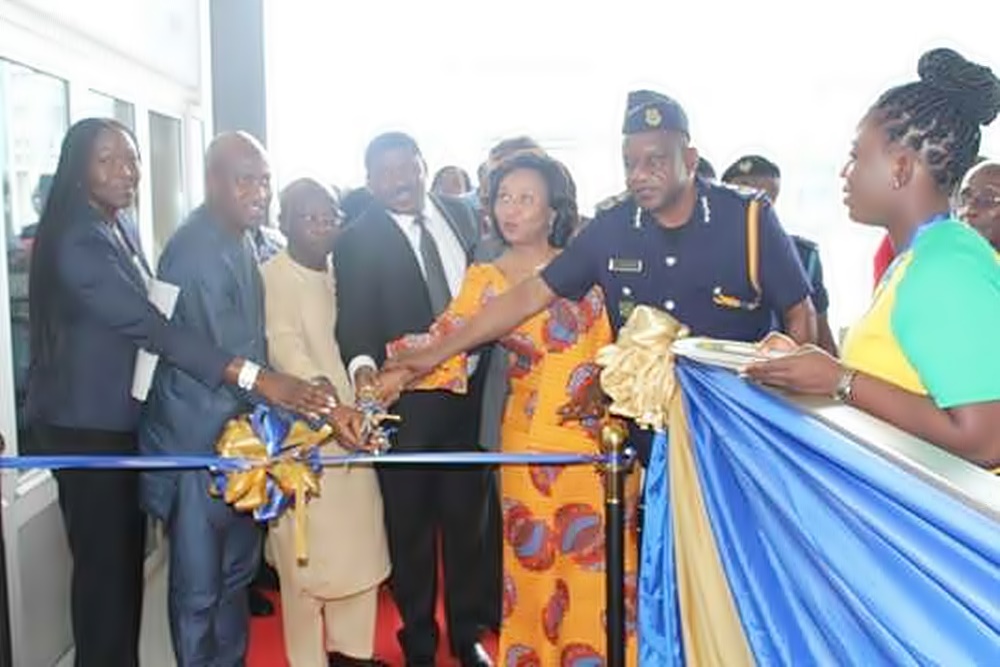
The Customs Division of the Ghana Revenue Authority (GRA) and its IT partner-West Blue Consulting have commissioned two electronic zone facilities at the Kotoka International Airport (KIA), and Tema port.
The e-zone facilities which were set up as part of the Ghana National Single Window (GNSW) project will provide 24/7 customer services to exporters and importers in the country.The facilities would also provide services including payments, self-service, and multimedia trade information to speed up business transactions at the KIA and the Tema port.
With the establishment of the facilities, the more than decade-old challenges of transacting business at the ports would be over. Plans are also far advanced to open another two e-zone facilities at the Takoradi port and the Aflao border by the close of the year.
According to the Commissioner General of GRA, Mr. George Blankson, “The creation of E-Zone centres at the ports is to serve as a one-stop-shop for all exporters and importers. This forms part of measures under the GNSW project to synchronize operations at the ports”.
The Commissioner General said with the operations of the centres, exporters and importers could access information and transact business in an easy and convenient manner.
Mr Blankson noted that the Single Window concept is the modernization of revenue generation for the country and thanked the management of the West Blue for working hard to implement the project.
A Deputy Minister of Finance, Mrs Mona Quartey said the e-zone centres would ensure fiscal discipline, stressing: “This forms part of our fiscal management process.”
Touching on the GNSW project, she indicated that the country has started to benefit from the project following the successful implementation of the Pre-Arrival Assessment Reporting System (PAARS).
PAARS is a modernized system that has been developed by the Customs Division of GRA as part of the implementation of the GNSW project to enhance revenue mobilization, improve border security and customs clearance, overcome duplication across regulatory agencies and promote trade facilitation.
Although she could not provide statistics to show the increase in revenue, officials at the Customs Division of the GRA said the successful implementation of the PAARS has increased revenue generation at the Tema and Takoradi ports.
According to them, revenue mobilised by Customs Division of GRA in 2015 increased by 1.66 per cent as a result of the implementation of the PAARS.
“Our revenue target for 2015 was GH¢8036.23 million and we realized GH¢8169.55 million which is remarkable”.
They indicated that before the implementation of the PAARS, the Customs Division of GRA hardly achieved its target, stating that “revenue target for 2014 was GH¢7010.32 million and we were able to collect GH¢6865.20 million and in 2013 revenue target was 5993.42 million and we collected GH¢5372.42 million.”
The Deputy Minister of Trade, Muntala Mohammed noted that the single window being implemented by government is the surest way of reducing the cost and time of doing business at the ports.
He noted: “Single window is not an event but a process so we are sure that gradually the problem we face in doing business at the ports will soon be reduced to the barest minimum”.
The Chief Executive Officer of West Blue Consulting, Madam Valentina Mintah added that the GNSW reforms have led to enhancing business-to-business, government-to-government, and country-to-country trade facilitations.
Instructively, the GNSW project was initiated on 1st September 2015 by the Government of Ghana to enhance the country’s trade and economic development and secure and increase government revenue. It was officially launched in 1st December, 2015.
Indeed, the Single Window concept was developed by the United Nations Economic Commission for Europe (UNECE) in 2005 as an effort to simplify, harmonise and standardise international trade procedures and associated information flows between trade and government and within government itself.
UNECE, through its UN Centre for Trade Facilitation and Electronic Business (UN/CEFACT), defined Single Window as “a facility that allows parties involved in trade and transport to lodge standardised information and documents with a single entry point to fulfil all import, export, and transit-related regulatory requirements. If information is electronic, then individual data elements should only be submitted once”.




























